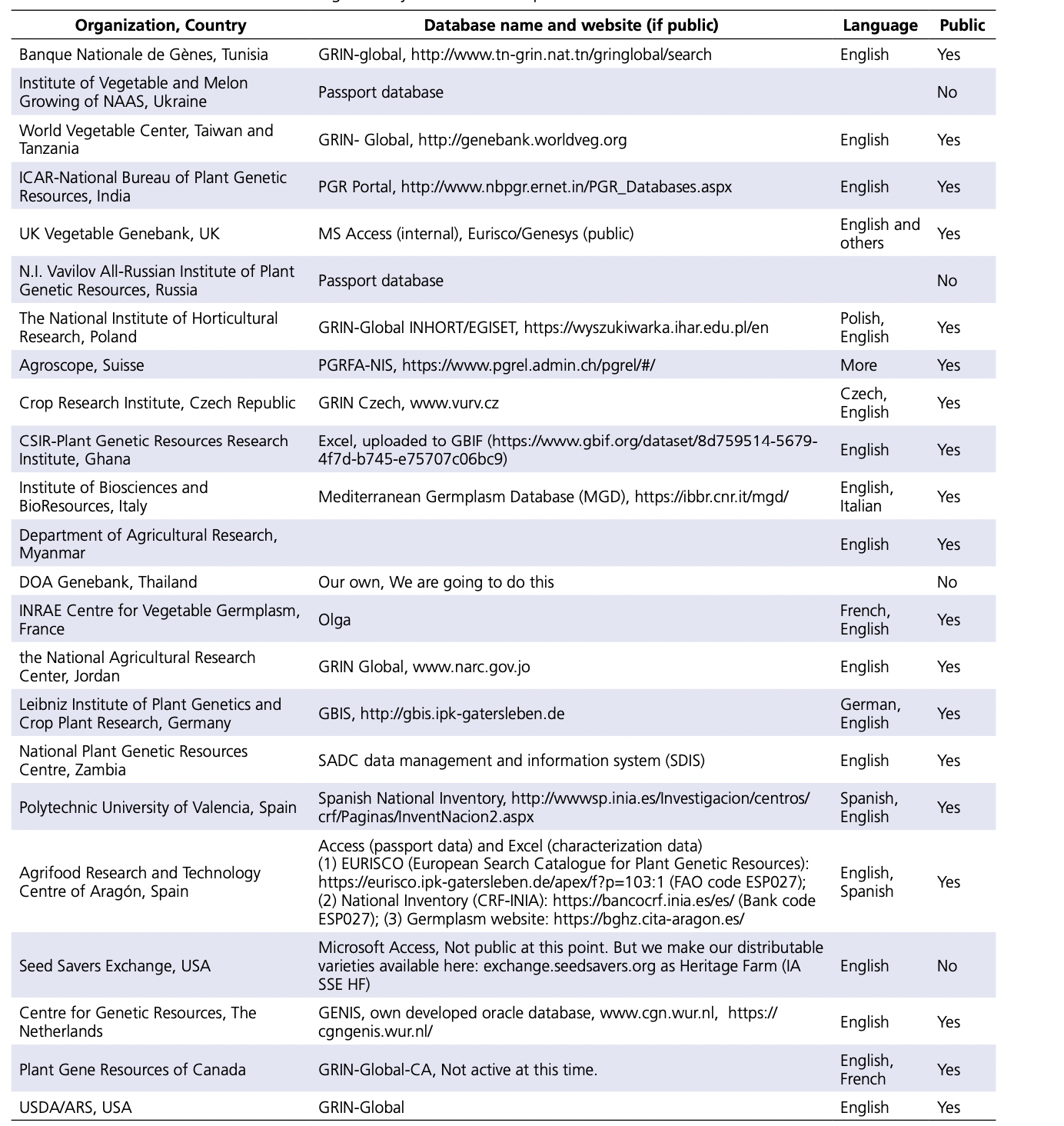Global Strategy for the Conservation and Use of Eggplants
Global Strategy for the Conservation and Use of Eggplants was published in 2022 (Global Crop Diversity Trust 2022, DOI: 10.5281/zenodo.7575464). This document, developed with the input of a large number of experts, aims to provide a framework for the efficient conservation and effective use of globally important collections of eggplant genetic resources. This webpage provides a summary of some of the its key findings and of the recommendations for priority actions.
Size of collections and their locations
Data from WIEWS, Genesys, GRIN-Global databases, and a survey indicated a total of over 19,020 Eggplant acessions conserved in genebanks at the global level. The interactive bubble map below shows the combined data retrieved in 2022 from Genesys, WIEWS and GRIN-Global databases.
Key collections
Important national collections include those at the National Bureau of Plant Genetic Resources (India), the National Genebank for Vegetable Germplasm Resources (China), the Polytechnic University of Valencia (Spain), the National Centre for Genetic Resources and Biotechnology (Nigeria) and the Plant Genetic Resource Centre (Uganda).
There are also key players in eggplant conservation in Northwestern Europe and in the United States. These are institutions with a strong emphasis on supporting international breeding and research, and that often have a global outreach. Examples include CGN (the Netherlands), INRAE (France), IPK (Germany), and USDA (USA). Several botanic gardens, such as the Royal Botanic Gardens (RBG) Kew (UK), also hold important collections. VIR (Russia) is another important player in the conservation and use of egg- plants and holds a significant collection. WorldVeg in Taiwan and Tanzania has the second largest eggplant collection in the world, and its materials are available under the SMTA.
Eggplant accessions conserved ex situ by regions where they are stored
The bars show the number of accessions of cultivated and wild Eggplant species by regions where they are stored (i.e. the location of the genebanks).
Ex situ holding by biological type
The chart shows the number of Eggplant accessions by biological type. For a large proportion of accessions conserved in genebanks the passport data in the open databases do not include information on the biological type of the accessions. The data was retrieved in 2022 from Genesys, WIEWS and GRIN-Global databases.
Information and documentation
The table provides an overview of the respondents’ databases for documenting their collections, and includes information on data availability, website and language.

Eggplant diversity tree
A diversity tree is a stratification of a genepool into groups and subgroups. The concept originated in a paper published by van Treuren et al. (2009) proposing a way to analyze and plan the composition of genebank collections. The diversity tree visualization is interactive (click on the tree to open it).
Recommendations for priority actions
Establish a global eggplant working group. The working group shall have representatives from key collection holders and from breeding and research institutions. This group will be responsible for the progress in implementing key activities for a global eggplant collection.
Develop an Eggplant Knowledge Platform (EKP). The platform could be a web page and should include management practices such as regeneration protocols for CWR, seed treatments, and contact information for ongoing projects or activities involving eggplants. The Crop Trust could have the responsibility for the platform.
Improve passport data accuracy and completeness in the collection holders’ databases to facilitate large-scale gap identification and screening for duplicates within and among genebanks.
Facilitate and encourage collaborative plant health-related activities, and develop a framework of protocols and management practices to address and reduce the risks associated with seed-borne diseases, including viruses and viroids.
Support collaborative activities associated with accession regeneration and safety duplication to reduce backlogs, and help to make all accessions available to users.
Characterize the global eggplant collection morphologically and genetically to enhance the use of the collection and making a global core collection of brinjal eggplant.
Encourage collaborative efforts to involve CWR in breeding programs, including the screening of CWR for useful traits in pre-breeding. This activity will seek support from public-private partnerships with long-term commitment and funding.
Partners and donor
The development of this crop conservation strategy was funded by the German Federal Ministry of Food and Agriculture (BMEL) as part of the three-year project led by the Crop Trust: Breathing New Life into the Global Crop Conservation Strategies: Providing an Evidence Base for the Global System of Ex Situ Conservation of Crop Diversity. The Crop Trust also cooperated with the Secretariat of The International Treaty on Plant Genetic Resources for Food and Agriculture (ITPGRFA) in the development of this document.




